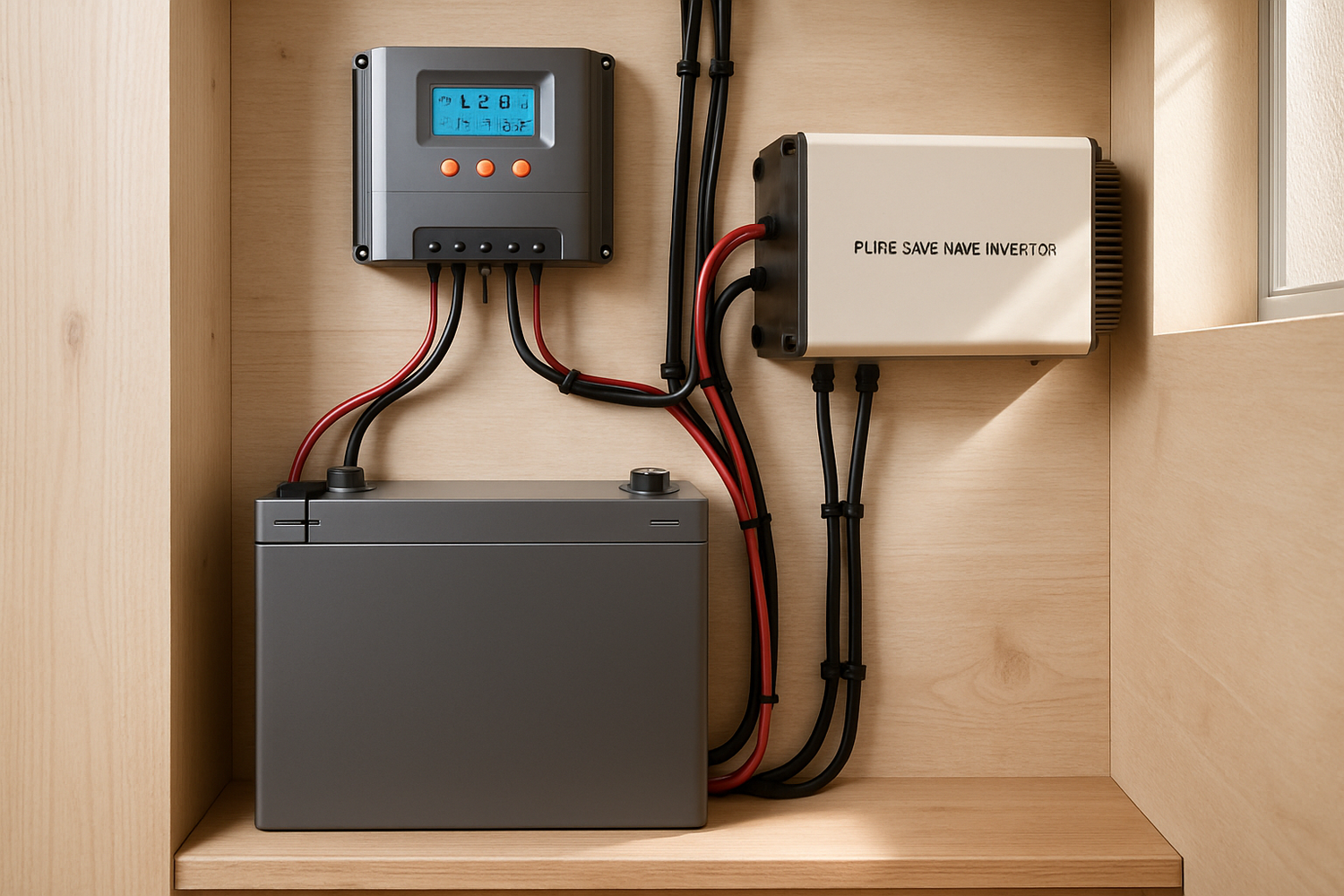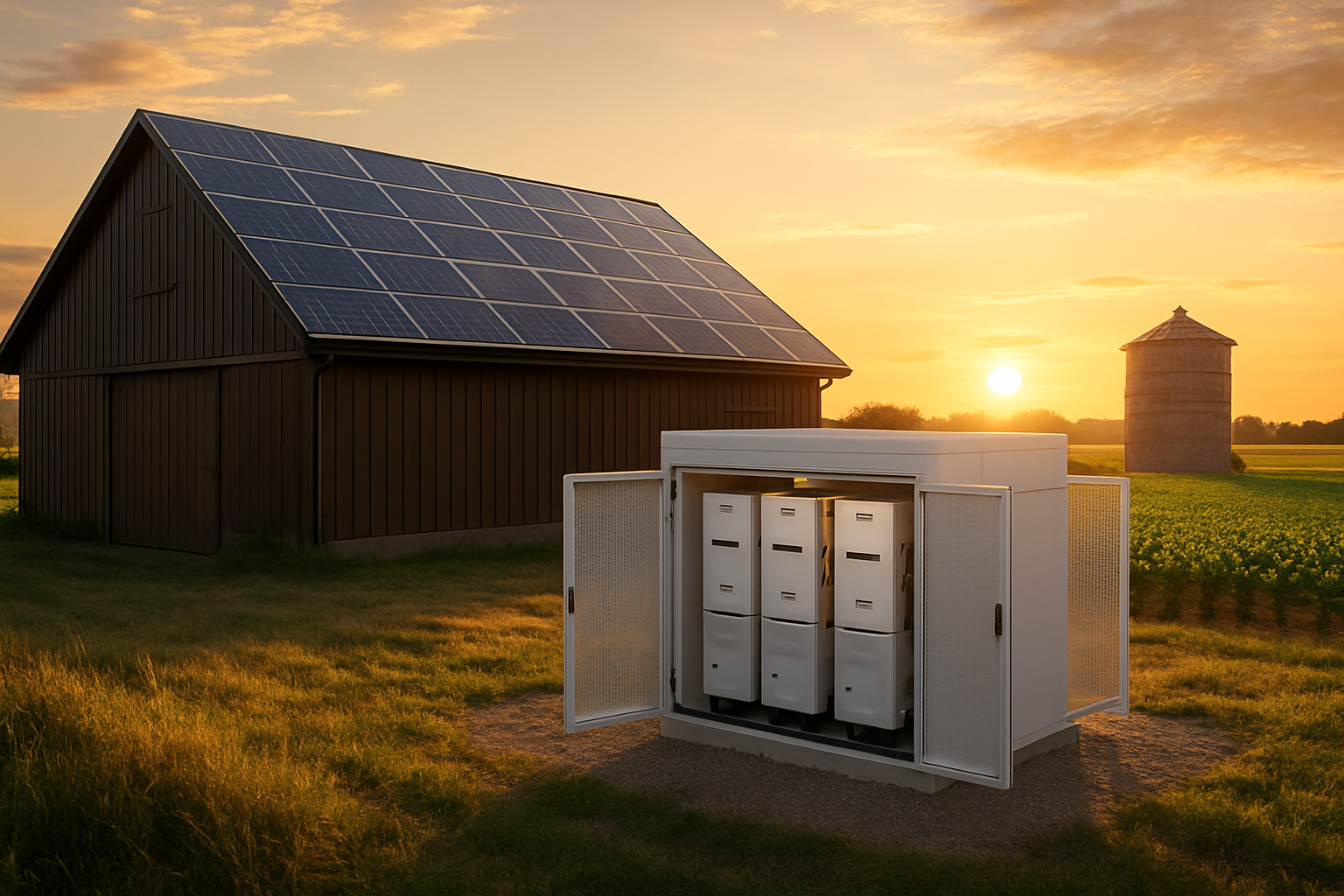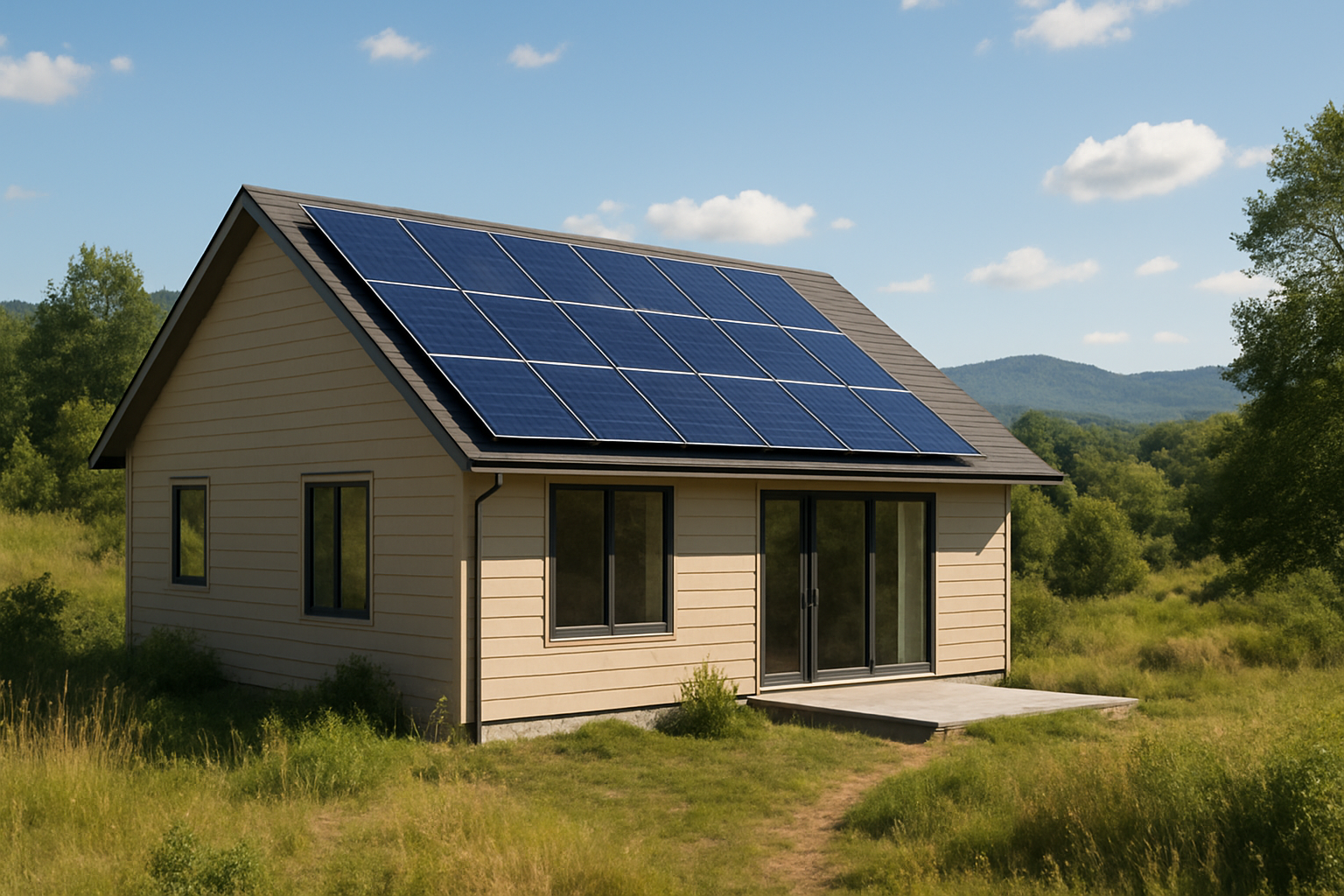An off-grid cabin offers a unique sense of freedom and tranquility. Yet, this independence comes with the challenge of providing your own power. A well-designed 12V LiFePO4 battery system provides a modern, reliable solution for bringing clean energy to your remote retreat. This setup allows you to enjoy essential comforts without the noise and fumes of a generator, creating a truly self-sufficient power supply.
Why Choose a 12V LiFePO4 System for Your Cabin?
When planning a cabin power system, the choice of battery technology is fundamental. Lithium Iron Phosphate (LiFePO4) batteries paired with a 12-volt architecture offer a compelling combination of performance, safety, and practicality for off-grid applications.
The Advantages of LiFePO4 Chemistry
LiFePO4 batteries represent a significant advancement over traditional lead-acid technologies. Their primary benefit is an exceptionally long cycle life; a LiFePO4 battery can often endure over 2,000 charge cycles while retaining most of its original capacity, compared to just a few hundred cycles for a typical lead-acid battery. This longevity translates to a lower total cost of ownership over the system's life. Furthermore, LiFePO4 chemistry is inherently stable and safe, with a much lower risk of thermal events compared to other lithium-ion types. They also allow for a deeper depth of discharge (DoD), meaning you can safely use more of the battery's stored energy—often up to 80-100%—without causing damage, unlike the 50% limit recommended for lead-acid.
The Simplicity and Versatility of 12V Systems
A 12-volt (12V) system is a popular standard for off-grid power, especially in smaller applications like cabins, RVs, and marine setups. This popularity means there is a vast market of 12V-native appliances, from refrigerators and lights to water pumps and fans. Using these appliances directly eliminates the energy loss associated with converting power from DC to AC through an inverter. The components for 12V systems are widely available and generally straightforward to install, making them an excellent choice for DIY-friendly projects.
Sizing Your Cabin's Power System Correctly
Properly sizing your off-grid solar power system is the most critical step to ensure it meets your needs without interruption. This process involves a careful assessment of your energy consumption and planning for variables like weather and system inefficiencies.
Calculating Your Daily Energy Needs
The first step is to conduct a load analysis. List every electrical device you plan to use in the cabin, its power consumption in watts, and the estimated number of hours you will use it each day. Multiply the watts by the hours for each device to get its daily watt-hour (Wh) consumption. Summing these figures gives you your total daily energy requirement.
| Appliance | Power (Watts) | Daily Usage (Hours) | Daily Energy (Watt-hours) |
|---|---|---|---|
| LED Lights (x4) | 24W (6W each) | 5 | 120 Wh |
| Laptop Charger | 65W | 3 | 195 Wh |
| Small Refrigerator | 50W (average) | 8 (cycle time) | 400 Wh |
| Water Pump | 60W | 0.5 | 30 Wh |
| Phone Charger | 10W | 2 | 20 Wh |
| Total | 765 Wh |
Sizing the Battery Bank
Once you know your daily watt-hours, you can size your battery bank. To convert watt-hours to the amp-hours (Ah) used for battery ratings, divide the total watt-hours by the system voltage (12V). In our example, 765 Wh / 12V = 63.75 Ah. This is the minimum daily requirement. However, you must also account for days of autonomy—the number of days your system can run without any solar input due to cloudy weather. A common recommendation is to plan for 2-3 days of autonomy. So, you would multiply your daily need by 3: 63.75 Ah x 3 = 191.25 Ah. Therefore, a 12V 200Ah LiFePO4 battery would be a suitable choice for this scenario.
Matching Solar Panels and a Charge Controller
Your solar array must be large enough to replenish your battery's daily usage and overcome system inefficiencies. To determine the required solar panel wattage, divide your daily watt-hour needs by the average peak sun hours for your location. For example, if your location gets 4 peak sun hours per day: 765 Wh / 4 hours = 191.25 W. It is wise to oversize the array by at least 25% to account for cloudy days and efficiency losses, so a solar array of 250W or more would be appropriate. A charge controller is needed to manage the energy flowing from the panels to the battery. An MPPT (Maximum Power Point Tracking) charge controller is more efficient than a PWM (Pulse Width Modulation) controller and is the preferred choice for maximizing energy harvest.
Key Components of a 12V Cabin Power System
A functional and reliable cabin power system consists of four primary components working in harmony. Each plays a distinct role in capturing, storing, and delivering electricity.
The LiFePO4 Battery Bank
The battery is the heart of your solar power for cabin setup. A 12V LiFePO4 battery stores the energy generated by your solar panels for use at night or on overcast days. Its high efficiency and deep discharge capability make it ideal for off-grid living. For a deeper understanding of battery metrics, the ultimate reference on solar storage performance offers valuable insights into how factors like C-rate and DoD affect real-world use.
The Solar Charge Controller
The charge controller acts as the brain of the system, regulating the voltage and current from the solar panels to prevent overcharging the batteries. This protection is crucial for extending battery life and ensuring safe operation. MPPT controllers are particularly effective at optimizing the power output from the solar array, especially in fluctuating weather conditions.
The Inverter
While many cabin appliances can run directly on 12V DC power, some devices require standard household 120V AC power. The inverter converts the DC electricity from your batteries into AC electricity. A pure sine wave inverter is recommended over a modified sine wave inverter, as it produces cleaner power that is safe for sensitive electronics like laptops and televisions.
Solar Panels
Solar panels are the source of your energy. They capture sunlight and convert it into DC electricity. Monocrystalline panels are generally more efficient and perform better in low-light conditions compared to polycrystalline panels, making them a good choice for cabin power systems where space and sunlight may be limited.
Installation and Safety Considerations
Building a cabin off-grid power system requires attention to detail and a focus on safety. Proper installation ensures the system operates efficiently and minimizes risks.
Proper Wiring and Fusing
Use the correct wire gauge for all connections to prevent overheating and voltage drop. Thicker wires are needed for longer runs and higher currents. Every positive line connected to the battery bank should be protected with an appropriately sized fuse or circuit breaker. This is a critical safety measure to protect against short circuits and equipment damage.
Battery Placement and Ventilation
Install your LiFePO4 batteries in a location that is protected from extreme temperatures. While they are more resilient than lead-acid batteries, their performance and lifespan are best maintained in a moderate environment. The space should also be dry and well-ventilated. Although LiFePO4 batteries do not produce gasses during normal operation, proper ventilation is a good general safety practice.
System Monitoring
A battery monitor is a highly recommended addition to any off-grid system. This device provides real-time information about your battery's state of charge, voltage, and current flow. It gives you a clear picture of your energy usage and remaining capacity, helping you manage your power consumption effectively and protect your battery investment.
Your Path to Energy Independence
Powering a cabin with a 12V LiFePO4 battery system is an achievable and rewarding project. By carefully calculating your energy needs, selecting quality components, and following safety best practices, you can create a dependable and sustainable power source. This approach not only provides the comforts of modern electricity but also aligns with the self-sufficient spirit of off-grid living. As technology improves and costs continue to fall, achieving energy independence is more accessible than ever. The International Energy Agency (IEA) projects that the total upfront costs of battery storage could decline by up to 40% by 2030, making these systems even more affordable.
Disclaimer: This article is for informational purposes only and does not constitute professional electrical or financial advice. Consult with a qualified professional before designing or installing any electrical system.
Frequently Asked Questions
How long will a 12V LiFePO4 battery last?
A high-quality LiFePO4 battery can last for 2,000 to 5,000 charge cycles or more, which often translates to a lifespan of 10 years or longer depending on usage and operating conditions. This is significantly longer than traditional lead-acid batteries, which typically last 3-5 years.
Can I expand my cabin power system later?
Yes, one of the benefits of a modular solar power system is its scalability. You can add more solar panels to increase your charging capacity or connect additional LiFePO4 batteries in parallel to expand your energy storage. Ensure that your charge controller and inverter can handle the increased capacity.
What appliances can I run on a 12V system?
A 12V system can power a wide range of devices. Directly, it can run 12V-native appliances like LED lights, refrigerators, fans, and water pumps. With an appropriately sized inverter, you can also power standard 120V AC appliances such as laptops, small kitchen appliances, power tools, and entertainment devices. The key is to ensure your battery and inverter can handle the total power draw of the appliances you want to run simultaneously.





Leave a comment
All comments are moderated before being published.
This site is protected by hCaptcha and the hCaptcha Privacy Policy and Terms of Service apply.